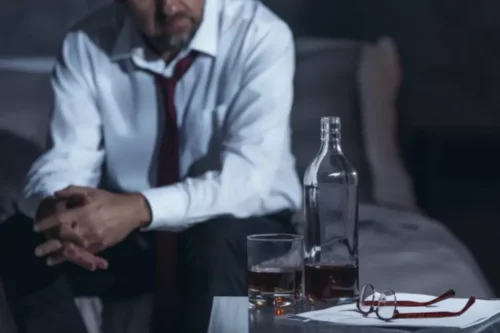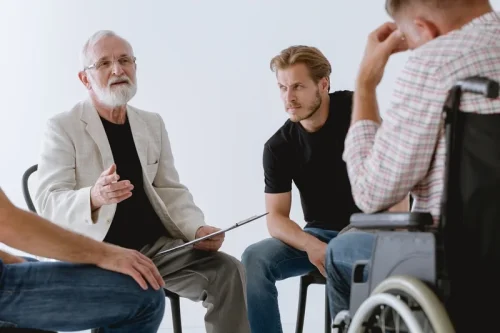
Each group of opioid receptors elicits a distinct set of neurological responses, with the receptor subtypes (such as μ1 and μ2 for example) providing even more [measurably] specific responses. For example, the opiate alkaloid morphine exhibits high-affinity binding to the μ-opioid receptor, while ketazocine exhibits high affinity to ĸ receptors. It is this combinatorial mechanism that allows for such a wide class of opioids and molecular designs to exist, each with its own unique effect profile. Their individual molecular structure is also responsible for their different duration of action, whereby metabolic breakdown (such as N-dealkylation) is responsible for opioid metabolism.
- Methadone and buprenorphine should be considered for patients with OUD to minimize the risk of death.
- People may develop OUD from the use of prescription or illegal opioids.
- Play an active role in protecting yourself and others from the dangers of opioid addiction.
- Sometimes they are used as cough suppressants or to alleviate diarrhea.
Understanding Opioid Use Disorder (OUD)
If you’re concerned that a loved one might be addicted to heroin, you should also look for the psychological and social signs. Those who develop an addiction to heroin will begin to become more withdrawn from the people in their lives, which can lead to isolating and sometimes sleeping a lot. Due to heroin metabolizing so quickly and the person experiencing symptoms of withdrawal, you’ll see massive mood swings. While high, the person may be extremely laid-back and sometimes overly affectionate. When they run out of the drug or start to come down, though, they can become extremely erratic with their emotions.
Naturally occurring opioids
They can also be provided at a part- or full-time residential facility that specializes in treating substance use disorders. Since OUD is a chronic disease, medically managed withdrawal is like treating a heart attack without treating the patient’s underlying heart disease that caused the heart attack. Opioids are safest when used for three or fewer days to manage serious pain, such as pain that follows surgery or a bone fracture. If you need opioids for severe pain, work with your healthcare professional to take the lowest dose possible, for the shortest time needed, exactly as prescribed.
How Do You Treat Opioid Use Disorder?
Coexisting problems such as excessive alcohol use or underlying mental illness can complicate the recovery process. Research shows there is a higher rate of substance use disorder among patients with diagnoses such as depression and those who use other substances such as alcohol. The overprescribing of prescription pain medications can lead to misuse and abuse of these medications. Opioid abuse can lead to many long-term health problems and even death. Unfortunately the number of people experiencing an overdose of opioids is significant. In 2017, opioid abuse was officially named a public health crisis.
What should you do if your doctor prescribes an opioid drug for you? To lessen the chance of developing a substance use disorder, follow your doctor’s orders carefully, making sure to only take the medication as prescribed. If you are going to have a medical procedure, you should have a conversation with your physician beforehand about pain control. Taking an opioid regularly increases the risk of becoming addicted. The time it takes to become physically dependent varies from person to person, but it is usually a couple of weeks.
How does opioid use disorder develop?
- This activation of the reward pathway makes opioids addictive for some people.
- People with untreated OUD often experience social, legal, economic, and health consequences as a result of their opioid use.
- Physicians, advanced practice providers, and pharmacists all play a role in recognizing and diagnosing OUD.
Those close to you may become aware of your addiction before you do. You should always talk to your doctor before you stop using a drug, even an opioid. They can help you reduce or prevent withdrawal symptoms opioid addiction treatment by gradually lowering your dose over time until you no longer need the medicine. If you think you or a loved one has developed an addiction to heroin, talk with your doctor or another healthcare provider.
From Mayo Clinic to your inbox
In fact, most people don’t even know the signs and symptoms of mental illness. Without knowing what to look for, people often go undiagnosed, and all they know is that they’re dealing with thoughts and emotions that they don’t understand. Due to this state of confusion and being scared, people often turn to drugs as a way to find a sense of relief. There is a wide range of reasons why people begin abusing drugs in the first place, and it’s crucial to know the risk factors.
- It is not yet known why some people become addicted to opioids and others do not.
- It’s as if they’re building their own little opioid-fueled fortress of solitude.
- Learning about addiction and its effects can help you understand what your loved one is going through.
- Opioid use disorder (OUD) is defined as the chronic use of opioids that causes clinically significant distress or impairment.
- Though its cause is not yet fully understood, contributing factors may include how opioids affect an individual’s brain as well as family history and environmental and lifestyle factors.
- Ultimately, a successful, interprofessional approach will optimize OUD therapy for patients.

The healthcare professional is an important partner if you decide it’s time to take action. Once a substance use disorder (SUD) is identified, it’s vital to seek support as soon as possible. Some people are able to shed their abuse and addictive habits by talking to their doctor about adjusting their current prescription. Others may consider joining a 12-step program or meeting with a substance abuse counselor. However, those who have fallen victim to addiction will generally require intensive care at an inpatient rehab center.

The Road to Recovery: A Journey Worth Taking

If a person then runs out of their prescription, they may take other opioid medications instead. They may also take medication for reasons other than those the drug was prescribed for. This article discusses the behavioral and physical symptoms of OUD. It also discusses its cognitive and psychological symptoms, the DSM-5-TR diagnostic criteria for OUD, and signs of opioid overdose. Finally, it outlines how to find support for OUD and the side effects of the opioid crisis.
Breaking free from an addiction to painkillers is far from impossible. As a first step, it is highly recommended to seek out a licensed medical detoxification program. These programs help people who have become dependent on opioids overcome withdrawal symptoms. Detox programs provide a solid foundation for individuals to pursue https://ecosoberhouse.com/ further treatment at an inpatient or outpatient addiction treatment center. To avoid turning back to drugs, you need to be able to manage your symptoms of mental illness, and this is done in a variety of ways. Qualified treatment centers use evidence-based treatment methods such as cognitive behavioral therapy (CBT).


Recent Comments